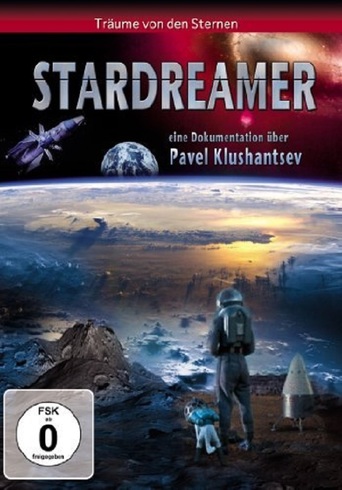tedg
I have been a long time admirer of this man, even before I saw his work.I was in a lab, and knew someone who had an appreciation for the power of imagination. One of his examples was this fellow, Klushantsev. He was great in two dimensions. One was in the stagecraft, the visual trickery that made pretend things seem real on screen. But far deeper than that, it was his vision of the future that the effects were turned to illustrating. I don't know of any other instance where this was attempted, even unsuccessfully. His visions were so striking, so attractive that essentially every space movie builds on his notions. Though his personal history is sad — he suffered under the stupid government — the history of his work is much better. That's because he happened to fall in the moment between two massive civilizations, each yearning for space. Their yearning adopted his vision.A non-scientist, he may have been the most influential in science for decades. Why, I wonder?Was it because the effects were convincing? Were they convincing because he simply saw how the visual logic of technology worked? Can one "see" how things must be? Can one man pull an entire universe, trillions of dollars? Can he create an ambition so grand that two superpowers cannot touch it? I recently heard someone make a big deal out of Tesla. I credit this man with more. Tesla merely invented real things, while this man saw inventions, and left the mere inventions to others. And yes, through this thing we call movies, which some believe to be mere entertainment.I wish I had known him.This documentary does some justice. But you cannot do enough justice until you see his actual work, and for that you need the actual films.Ted's Evaluation -- 3 of 3: Worth watching.
jevries
I.N.C.R.E.D.I.B.L.E....the man Pavel Klushantsev, without a doubt, has served many, many filmmakers very well creating stunning visual effects for his science fiction movies. It's obvious that Stanley Kubrick, George Lucas and the likes used these techniques for their movies and are known for basically inventing these effects. It is very, very, unfortunate that Pavel Klushantsev didn't receive the recognition during his live he so well deserved. I truly hope that after seeing this great documentary people will recognize the incredible talent of Pavel Klushantsev and will start to see his movies and credit him as one of the most important man behind science fiction movies visual effects.Jevries.
gfast
Just saw this amazing documentary on australia's SBS network. I'm glad I did because I had not heard of this director before. Goes to show how unrecognised his life has been as I am in the film business and unless I had seen this doco his story would have perhaps escaped me. It is a sad indictment of the soviet era where political motivation was more important than the individual. This ideology is more suited to ants than humans. Klushantsev's work was embraced in the height of the space race where it was seen as a valuable propaganda tool. When the usefulness of this concept faded he was summarily dismissed from the studio he helped make a success and died in 1999, blind, penniless and virtually forgotten. He had developed many key, innovative technical and visual concepts that were totally original in scope and execution, many of which were subsequently used, or stolen, by future film-makers. There are some startling similarities with ideas embraced in such landmark western films as "2001: A Space Odyssey", "Aliens", "Terminator" and many others. Klushantsev's amazing "Planeta Bur" - 1962 (aka "Planet Of Storms")was literally ripped to pieces and used in two C-Grade US productions, "Voyage To The Prehistoric Planet" - 1965 - directed by Peter Bogdonovich and the other "Voyage To The Planet of Prehistoric Women" - 1968 - directed by Roger Corman. Klushantsev was uncredited in both these films. All sci-fi fans should see this doco and find a way to view Klushantsev's main films.
